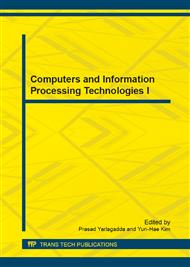[1]
Gongque Jiangcuo, Theory of Tibetan, Tibetan Studies . 1997 III.
Google Scholar
[2]
Kelsang Jumian, Practical Tibetan grammar course. Sichuan minorities press. November 2004 edition.
Google Scholar
[3]
Han Qinghua, Yu Hongzhi. Anduo Tibetan speaker-independent isolated words speech recognition based on HMMs. Software Guide . 2010 07.
Google Scholar
[4]
Pei Chun Bao. The Tibetan language speech recognition technology based on the standard Lhasa, Master Thesis in Tibet University , (2009).
Google Scholar
[5]
The HTK Book(for HTK Version 3. 4). Cambridge University Engineering Department. (2009).
Google Scholar
[6]
Website: http: /htk. eng. cam. ac. uk.
Google Scholar
[7]
L awrence Rabiner, Biing-Hwang Juang. Fundamentals of Speech Recognition, Tsinghua University Press Copy.
Google Scholar
[8]
Nichong Jia, Liu Wen Ju, Xu Bo. Chinese large vocabulary continuous speech recognition system progress. Chinese Information. Volume 23 No. 1 January (2009).
Google Scholar
[9]
Li Yonghong, Kong Jiangping, Yu Hongzhi. Automatically convert Tibetan language audio and its implementation. Tsinghua University (Natural Science) . 2008 Volume 48 of the S1.
Google Scholar
[10]
Zheng Fang, Wen Hu Wu, Fang Ditang. Recognition Keyword Research of Continuous stream voice. Fourth National Conference on Human Machine Speech Communication Proceedings, (1996).
Google Scholar
[11]
Gao Sheng, XU Bo, HUANG Taiyi. Chinese triphone model Based on Acoustics Decision Tree. Vol 25 No. 6 November (2000).
Google Scholar
[12]
Julian James Odell. The Use of Context in Large Vocabulary Speech Recognition. University of Cambridge. March (1995).
Google Scholar


